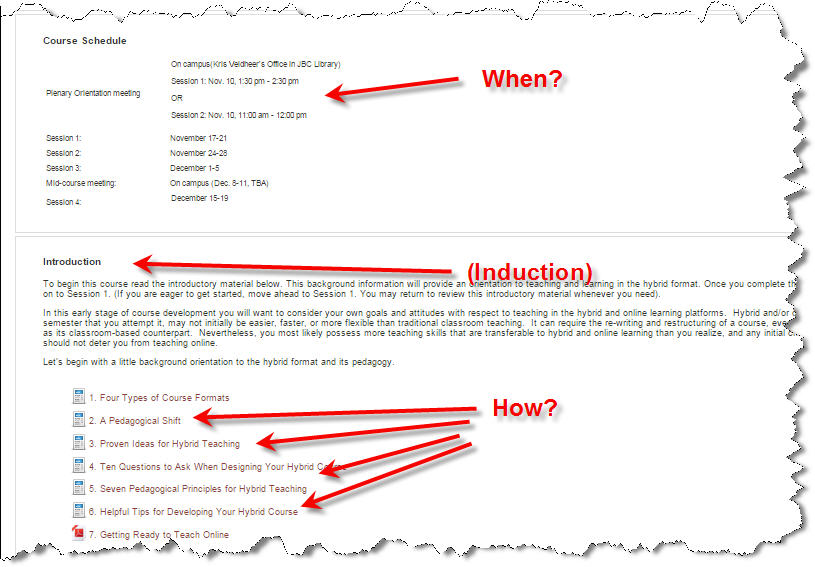Effective teaching in the online environment calls for following sound pedagogy, often, the same as those practiced in the classroom. After all, in a real sense learning is learning, regardless of where it happens. Whether you are teaching a dedicated online course, using a hybrid format, or using a LMS course site to support the classroom learning experience, it’s helpful to follow learner-focused instructional practices when setting up your online course site. One such practice is induction–and, you can never overdo it.
When I was in parish ministry our staff met weekly to do worship planning. In addition to reviewing text, sermon topic, music, hymns, and other components of the worship service we would always ask and decide on the question, “how will we enter the room?” That is, how and when would the worship leaders (choir, pastoral staff, etc.) enter the worship space so as to lead the congregation into the worship experience. We wanted to “set” the tone, affect, and focus of the worship experience from the beginning to create expectancy, and help the congregants know how and what to pay attention to.
In a learning environment, induction, or, “set induction” refers to those actions by the teacher designed to introduce the students to the learning experience, be it a course of study, or a lesson. It helps the learners relate their experiences to the objectives of the lesson or course. Using set induction will help put your students in a receptive frame of mind that will facilitate learning.
Two purposes of set induction are: (1) to focus student attention on the lesson or course–its purpose and relevance to the student; and (2) to create an organizing framework for the ideas, concepts, principles, or information which is to follow. Effective application of set induction will provide two important instructional functions for your student it will serve as an advanced organizer, and it will create expectancy, which is an important motivator for learning.
In a classroom setting many instructors use the course syllabus as a tool for course induction. Walking your students through a well-designed course syllabus will provide a framework for helping your students answer the Ws that are anxiously rattling around in their minds: who, what, when, where, and, how? Admittedly, most instructors do not take enough time using this technique. Which is why you may get asked several times during the course, “When is the final exam due, again?”
When setting up your online course environment practice IRA and use the Ws. IRA stands for “Information Reduces Anxiety.” When your students begin a course they have some level of anxiety and are looking to understand what the course is about and what will be expected of them as a learner. Front load your course site with as much information as they’ll need to answer their questions. When you design your introductory/orientation page, embed the Ws (who, what, when, where, how, why), it’s what they are looking to answer. As your course progresses, cut back on the content coverage and increase learning process.
Below is an example of a course site that front loads the Ws for set induction. It’s the first thing a student sees before getting into the course.


